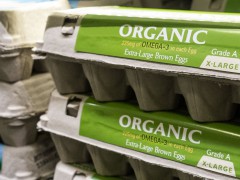As a result of the exploding demand for Greek-style yogurts, processors like Chobani and Fage are dramatically expanding their processing facilities within New York State. I started to wonder if the state’s dairy farmers were doing better off as a result. Milk policy and pricing is terra incognita to me, so I had to lean on some friends to explain to me the relationship between aggregate demand and the prices which dairy farmers receive for their toil.
Doreen Barker of Barrows Farm did some fancy footwork in a recent blog post that answered some of my questions about what the near-term future will look for dairy farmers in the state
I also have to thank Lorraine Lewandrowski for sending me a series of articles that appeared last year in Farmshine, a weekly dairy publication available only in print. Authors Tammy Graves and Sherry Bunting did such a good job of reporting on the relationship between greek yogurt, milk policy, and dairy demand that it is a shame the articles are not widely available on-line. With their permission, I have put them up here in PDF format. Must read!
Mailbox Price and Milk Demand In New York State, By Sherry Bunting
Dairy Processing in New York: The Good, the Bad and the Ugly , by Tammy Graves and Sherry Bunting.
I cannot link to Part Two of The Good, The Bad, and The Ugly because the PDF size is over my meager limit, but here is a key quote:
Despite this news, New York’s mailbox milk prices, as report- ed by USDA, lag the U.S. average most months since 2008 (see graph). And, when central New York producers compare milk checks with colleagues elsewhere in the state, net returns do not fare well in the comparisons. Class I utilization and location dif- ferential zones are part of this equation. But putting it all togeth- er, New York’s mailbox milk price has lagged the U.S. average mailbox milk price beginning markedly in 2008 and continuing through the recent first quarter of 2011.
So far, it looks like the dairy farmers are not seeing any appreciable gain from the increased demand for their products. The “Greek Yogurt Effect?” There isn’t one.

















